In the Spring, when the weather turns warm, many will go out foraging, especially for wild mushrooms.
Wild mushrooms are an exciting edible to search for as they can be on the rare side. As a result, foraging for mushrooms becomes a race.
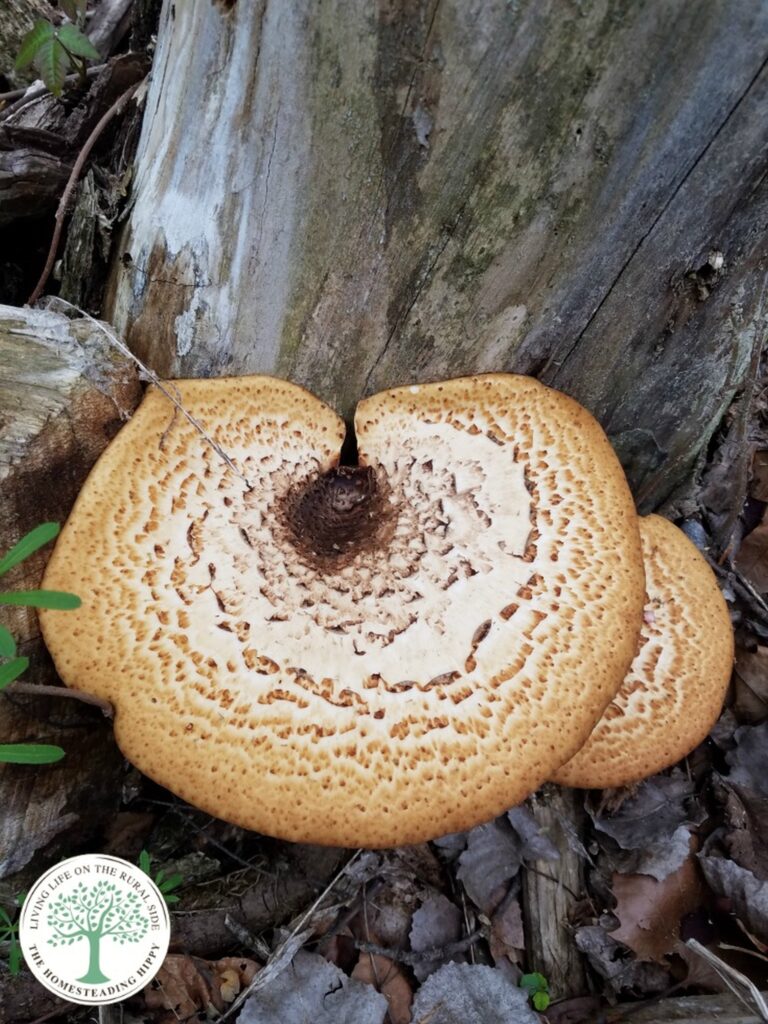
A race to see who will get that prize first. Wild mushrooms can be easy to find, or they can hide well, depending on the area.
When we go out mushroom hunting, it’s not uncommon in our area to come up empty handed. Especially when we hunt morels. It’s a widely loved mushroom in Indiana, and most mushroom hunters love hunting for them.
We love to go where the wild mushrooms grow. It’s a place of peace, solitude, and relaxation. Many different mushroom species can be hunted for while enjoying the outdoors.
The best time to go hunting for many species is after heavy rains, as they will grow rapidly when it’s wet out.
What Are Pheasant Back Mushrooms?
Pheasant back mushrooms are wild edibles with great flavor that appear in the Spring.
Also called Dryad’s Saddle, (Polyporus squamosus), pheasant back mushrooms are found in a broad, circular shape, and can be found all Spring and even during the Summer in some places. They are completely edible, and have a meaty, full flavor.
Dryad’s Saddle, AKA Pheasant back mushrooms can almost look like kidneys or even a heart. They are usually found on elm, but any deadwood can grow them.
The markings will look almost like a pheasant’s feathered back. They are most tender and palatable while young and small, but even the older, larger ones are edible.
Appearance
What does the pheasant back mushroom look like? It has some unique characteristics that can help you positively identify it:
- Body – The fruit body can be yellow to brown and has “squamules” or scales on its upper side. On the underside , you will see the pores that are characteristic of the genus Cerioporus squamosus.
- Tubes – The tubes are between 1 and 12 mm long.
- Stalk – The stalk is thick and short, up to 5 cm (2.0 in) long.
- Spore color – will produce a white spore print when laid on dark paper or glass.
Another way to identify this mushroom is by the smell. It has a unique smell not unlike that of a cucumber or watermelon rind. It’s not mushroom-like at all.
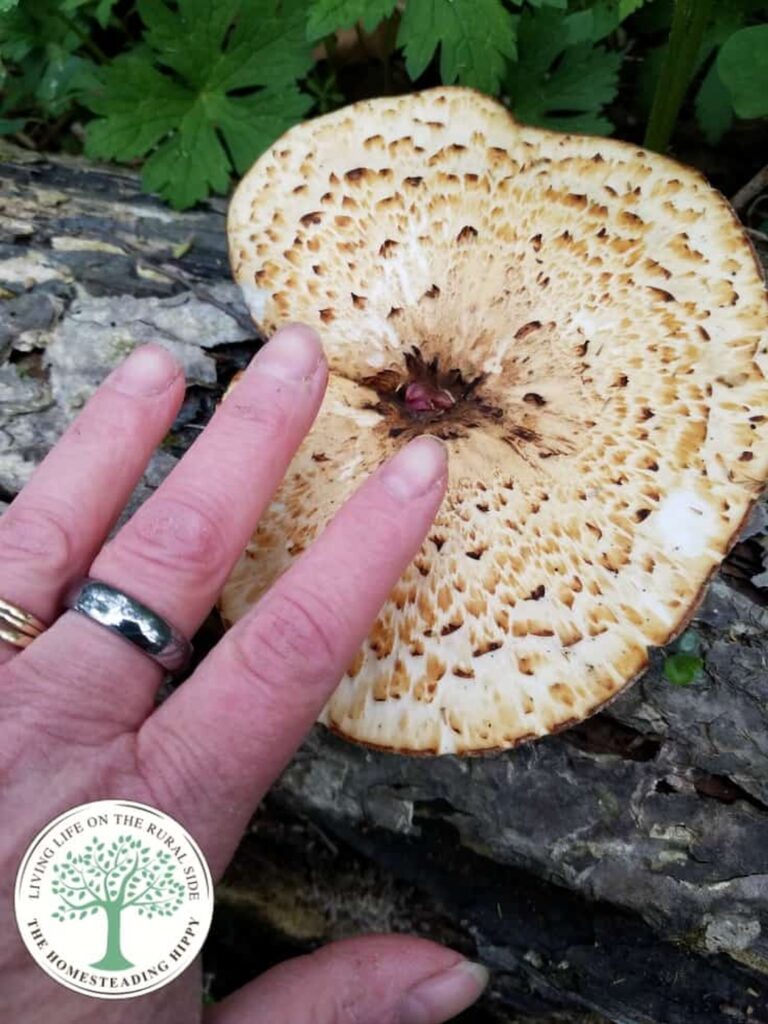
Where to Find Pheasant Back Mushrooms
While most often found on logs laying on the ground, you CAN find these edible wild mushrooms in living trees that are still upright.
Chances are, if you’ve ever foraged for morels, you have probably already seen pheasant backs.
While they can be found alone, they can appear in multiples, “piggybacking” each other. These are known as bracket fungi, meaning they will live in small clusters of up to 20 individuals. Because of this, they can vary in size, anywhere up to a foot in diameter.
As always, be sure to double check your field guides to assist you with proper identification. There are plenty of poisonous mushrooms out there, and you don’t really want to make a mistake with this.
To see how to go foraging for mushrooms safely, read more on spore prints here.
One more important thing to consider is sun exposure. Most mushrooms have an ideal range of soil and ambient temperature for growth.
That’s also true of the pheasant back. Look for hills and creek bottoms with southerly exposure in the early spring, until around the first of May.
These areas warm up first and offer the best temperatures for mushroom growth. As the temperatures warm up later in the summer, work toward areas with more northerly exposure.
Selecting the Best Pheasant Back Mushrooms
When it comes to pheasant back mushrooms, small is usually best. These mushrooms tend to be more tender and easier to eat than their larger counterparts.
Look for mushrooms that are about 3-4 inches across at the widest point of the cap. Avoid any that are much larger, as they may be tough and difficult to eat.
With a little bit of careful selection, you can enjoy a delicious meal of pheasant back mushrooms that are just the right size.
Another way to test edibility is by looking at the size of the pores on the mushroom’s surface. Mature pheasant backs have wider, dilated pores, while freshly flushed ones (which are the ones you want) have pores that are about the size of pinholes.
Perhaps the easiest way to tell if a pheasant back is edible is to tear it down the middle. If you can easily rip the mushroom apart, it’s good to eat.
If you can only tear it partway, cut off the edible portions and discard the rest. If you can’t tear it at all, throw it out.
Another way to tell if the mushroom is edible is to look at the stem. The stems on these mushrooms go bad first.
Therefore, if you’re unsure about a pheasant’s back, slice off the cap and leave the stem intact on the log. When in doubt, it’s better to err on the side of caution and discard the mushroom altogether.
Harvesting Pheasant Back Mushrooms
For anyone interested in harvesting their own mushrooms, there are a few things to keep in mind.
Equipment Needed for Foraging and Harvesting
First of all, it is important to have the right equipment.
A sharp field knife should be first on your list when it comes to equipment for harvesting these mushrooms. I carry along a mesh bag to collect my mushrooms but a small plastic container could work, too.
A cloth mesh bag, over plastic or even paper bags, is ideal, as it is meant to allow the spores to continue to spread. The spores will fall through the mesh so they can grow in the area where theyf all.
Skip the lid if you have to carry the mushrooms far – a sealed plastic container will build up moisture that could cause your mushrooms to spoil prematurely.
Also, a small brush or paintbrush are essential for cleaning the mushrooms without damaging them.
Some other good items to tote along include:
- A soft cloth for brushing off dirt or debris
- A mushroom field guide
- A compass and/or map
- Waterproof shoes
Harvesting Process
When you harvest these mushrooms, the stalk can be difficult to break off. Use a sharp field knife to gently slice through it to make it easier.
Again, try to harvest smaller mushrooms – don’t wait for them to get bigger, since they’ll taste better and more tender when they’re small. The size of a silver dollar is ideal.
A smooth cut from your knife will preserve the interior flesh of the mushroom without damaging the tree or bark. Don’t twist or pick – slice. This will let the mushrooms regrow, since a piece of the mushroom will be left behind.
How to Dry Pheasant Back Mushrooms
If you find you have more pheasant back mushrooms than you can eat in that short time frame, you can slice them into slices, place in a 200 degree F (93 Celsius) oven for 6 hours and dehydrate. You can also use a dehydrator, if you’re lucky enough to have one.
Once dry, the mushrooms will be crisp and crumbly to the touch.
Grind into a powder when fully dry and use it to flavor soups, gravies, or even add to bread to extend your flour. You can also slice off the stem and sauté them whole to use in place of meat as a burger.
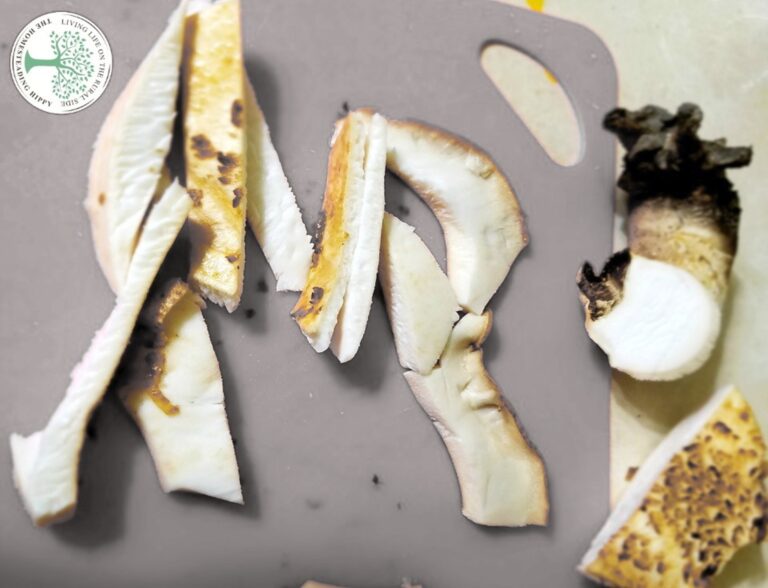
Cooking These Mushrooms
There are a variety of different methods that can be used to cook pheasant back mushrooms, but one of the best ways is to sauté them.
Sautéing helps to bring out the natural flavors of the mushrooms and allows them to retain their moisture. It also prevents them from becoming tough or rubbery.
Once you have gotten the mushrooms home, they are best eaten within 12 hours.
For a great dryad’s saddle recipe, simply wash them gently to remove dirt and debris.
Remove the stalk from the cap and save for broth. Slice in 1/2″ thick slices. To sauté pheasant back mushrooms, simply cook them in a small amount of oil over medium heat until they are tender and lightly browned.
You can then add them to your sauces or other dishes (I recommend adding a bit of salt). They taste great with other foraged foods, like ramps, fiddleheads, or wild asparagus, too.
You can even eat them as a side dish! Pheasant back mushrooms do have a bit of an acquired taste, but as long as I have young, tender ones, I really do love them.
Here are a few more tips for cooking your pheasant back mushrooms…
Can You Eat Pheasant Back Mushrooms Raw?
Yes, though they don’t taste the best.
These mushrooms can be eaten raw or cooked and have a mild taste with a slightly nutty flavor. Cooking helps tenderize the mushrooms and make them more palatable.
Slice Them With a Mandolin Slicer
One way to cook pheasant back mushrooms is to slice them with a mandolin slicer. This will give the mushrooms thin, even slices that will cook evenly. You can then sauté the mushrooms in butter or olive oil until they are tender.
Only Cook Young, Deep Brown Mushrooms – White Ones Are Older
When cooking pheasant back mushrooms, it is best to use only young, deep brown mushrooms. White mushrooms are older and will be much tougher.
Look at Pore Size for an Indicator of Freshness – Wider Spores Are More Tender
When looking for fresh pheasant back mushrooms, pay attention to the size of the spores. Wider spores indicate that the mushroom is fresher. Fresher mushrooms will also have a lighter coloration and should not be wilted or discolored.
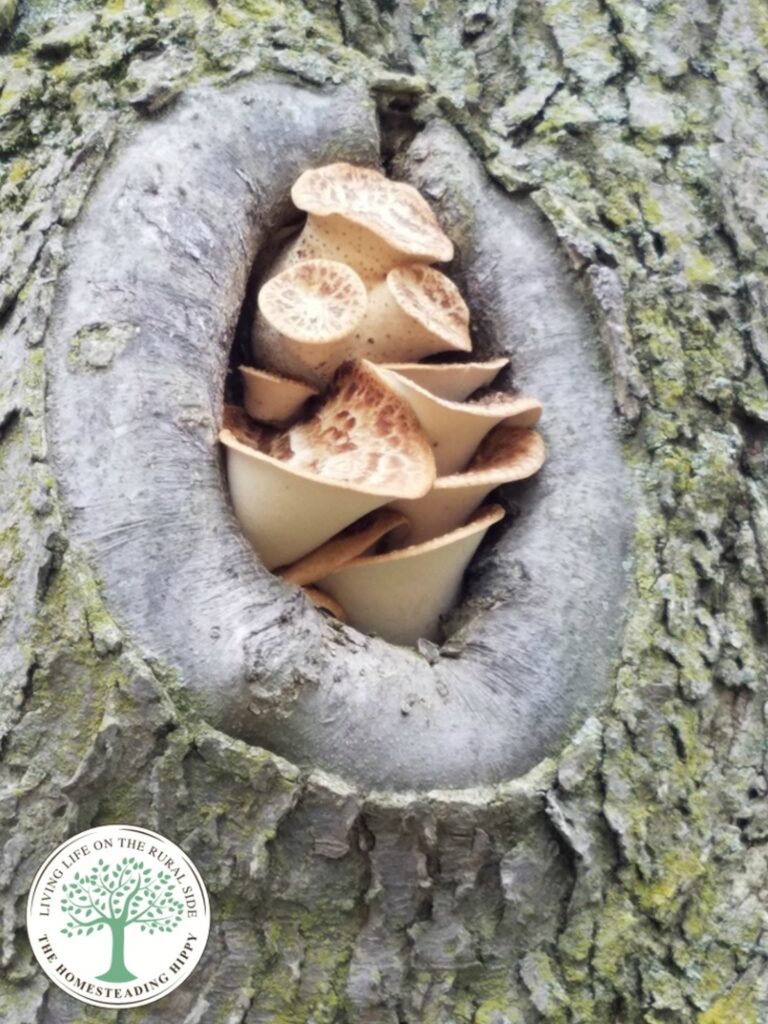
How Much Are Pheasant Back Mushrooms Worth?
Pheasant back mushrooms are considered a delicacy in many parts of the world and can fetch a high price on the market. While the exact value of pheasant back mushrooms varies depending on the region, they are typically worth between $20 and $30 per pound.
Consequently, foragers who are lucky enough to find these rare mushrooms can earn a tidy profit by selling them to local restaurants or markets.
Other Young Mushrooms to Forage For
Once you’ve tried pheasant back mushrooms, you might want to branch out and try a few other varieties!
Chicken of the woods is one other popular mushroom. These are found just about everywhere.
Morel mushrooms are one of the most popular types of wild mushrooms, but they are not the only delicious variety that can be found growing in the wild.
Chanterelles, for example, have a distinctive golden color and a slightly fruity flavor that makes them a favorite of chefs around the world.
Another type of mushroom to look for is the oyster mushroom, which gets its name from its shape and has a slightly sweet taste. If you’re feeling adventurous, you can also try hunting for hen of the woods mushrooms, which have a somewhat meaty texture.
No matter what type of mushroom you find, make sure to cook it thoroughly before eating, as some varieties can cause stomach upset if they are eaten raw.
Final Thoughts
There you have it! Everything you need to search for these mushrooms in their natural hardwoods habitat.
Have you ever gone foraging for pheasant back mushrooms? What was your favorite way to prepare them? Be sure to pin this for later!
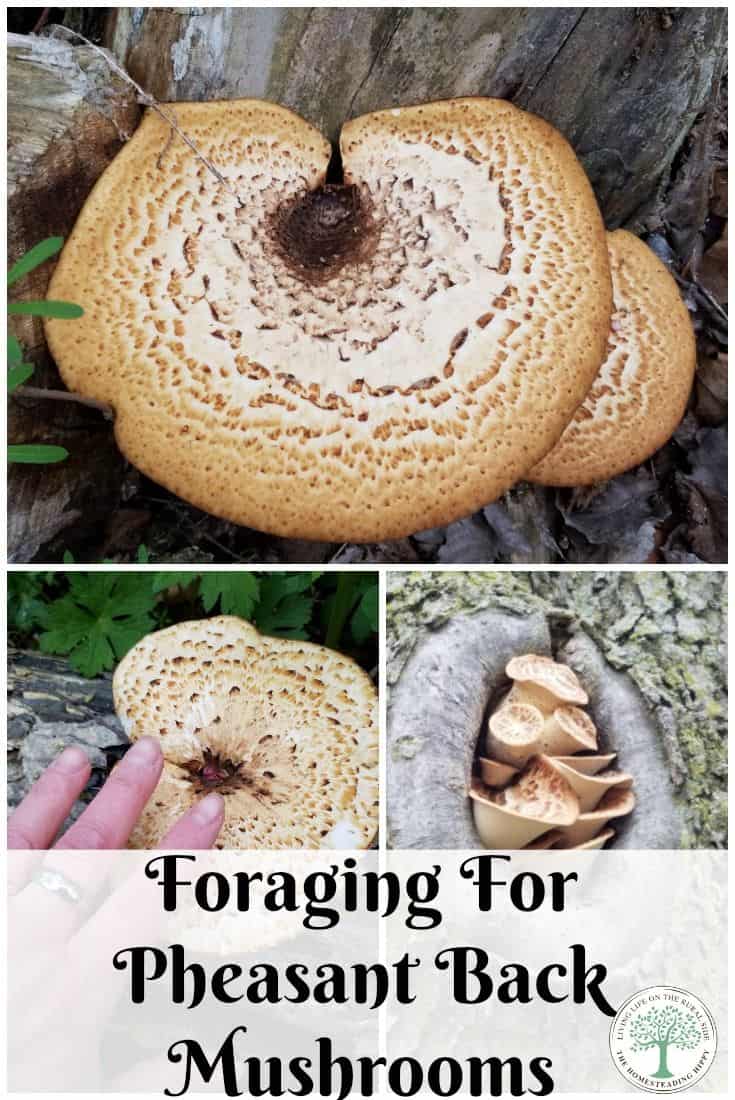

Heather’s homesteading journey started in 2006, with baby steps: first, she got a few raised beds, some chickens, and rabbits. Over the years, she amassed a wealth of homesteading knowledge, knowledge that you can find in the articles of this blog.
Learn more about Heather and the rest of the writers on this page.

Hello do you seem to find pheasant backs and morels growing near each other?? I moved to North central WI from West central WI four years ago and I’m still having difficulty finding morels out here. Any recommendations for where to look with red granite soil?? Dead elms just don’t seem to produce them out here. Any ideas greatly appreciated!!!!
I haven’t found them close together myself. Morels grow on the ground near ash trees, and pheasant backs grow IN or ON trees. I would try looking in a deeply wooded area first.
Yes just last weekend I had them with in 30 feet of each other, they both like elms.
I slice them thin. I sauté them in ramp butter until tender. If I have ramps I add those too. I finish it off with hoisin sauce. We eat it as a side dish or use it as a topping on burgers/hot dogs.
yum!
Wow sounds yummy. Never thought about making the ramps into a butter, great thanks.
I have found it to be easier to spot than the other mushrooms if you are into foraging… Often in clusters!
If you are cooking them, they are ideal for fish or chicken because most of them tend to have lemony flavors…
I found mushrooms on an elm stump yesterday. I live south of Green Bay, WI. I took photos and my sister near St. Cloud, MN, says they are pheasant back. You description described them exactly except now it is mid-September. Can they be growing now?